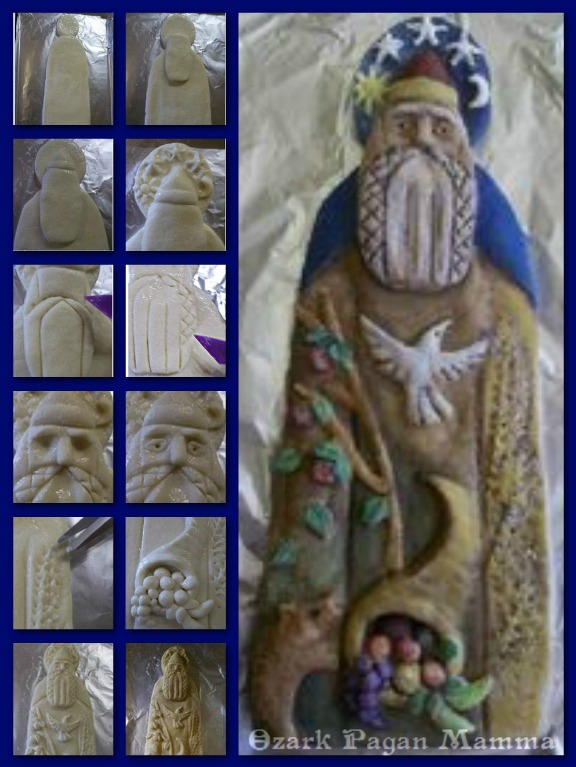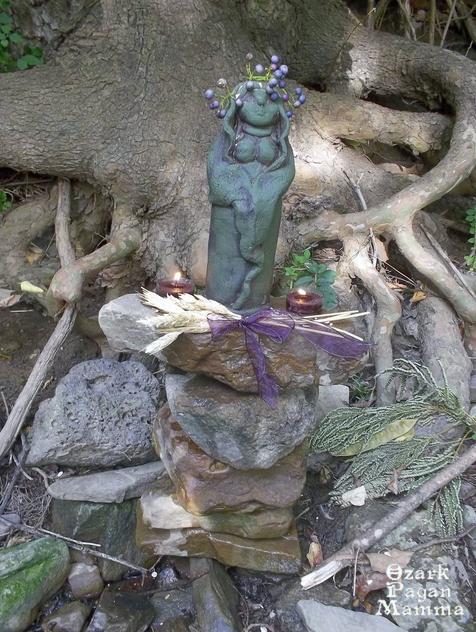Abundance, or the Lord of Plenty- as I like to call him, is the third primal Power in Waincraft, the second born of Mother Night, and bright twin of the Wild Father. In creating a sculpture to represent him for my altar, I drew on imagery of what this Power represents for me from Germanic and Celtic sources, but also a lot from intuition.
As for how I made the sculpture, just as I did with my Wild Father sculpture, I started with a regular batch of salt dough (2 cups flour, 1 cup salt, and about a cup of water). After kneading, I broke off a big chunk of the dough and formed a rectangle and rounded off the top edges for shoulders. I rolled out some more dough and cut a circle shape with a drinking glass. This I placed above the shoulders as a backdrop to the head and celestial objects around the figure, making the basic size and outline match its twin sculpture.

The beard and face were all one rounded rectangular piece. (When attaching a new piece, always dampen the base surface.) I used a cutting tool to add details to the beard. A tiny rope of dough was used for the nose/eyebrows. After making soft indentations for the eye-sockets, I attached tiny balls of dough for the eyes, poked holes for the pupils, and cut horizontal slits to suggest eyelids.
I cut grooves into the sides of the figure to suggest arms of a robe. The wheat-like texture on the right of the figure was made with little scissor snippets.
The cornucopia, pig, and bird shapes I added to the base were cut out of dough flattened with a rolling pin. Ropes of dough were used to make the tree branches and the sun rays. The apples and leaves on the tree, and fruit in the cornucopia were all made from small balls of dough. For the leaves, I flattened small balls of dough and pinched each end. The stars around the head started out as tiny balls of dough also. I cut and carved their shapes after attaching, pressing down with a small tool, the areas I wanted to recede into the background.
For the opening to the cornucopia, I pressed into the base a little with my thumb, then attached a rope of dough around it, smoothing with dampened fingers where the rope joined to form a circle. I then pressed ridges into the cornucopia basket.
When completely done shaping and blending, I baked it at 250°F for several hours.
After cooling, I painted all the grooves and crevices with an acrylic craft paint in the shade of burnt umber to get a good contrast. I used a paintbrush dipped in water to blend a little bit of the color to other areas for lighter contouring. When this was dry, painted the rest of the piece. When all of this was dry, I sprayed the entire piece with a coating of clear acrylic.
My new altarpiece now sits upon the fireplace mantle next to a small cauldron. I hope this description of how I made it was useful to anyone wishing to make something similar.






